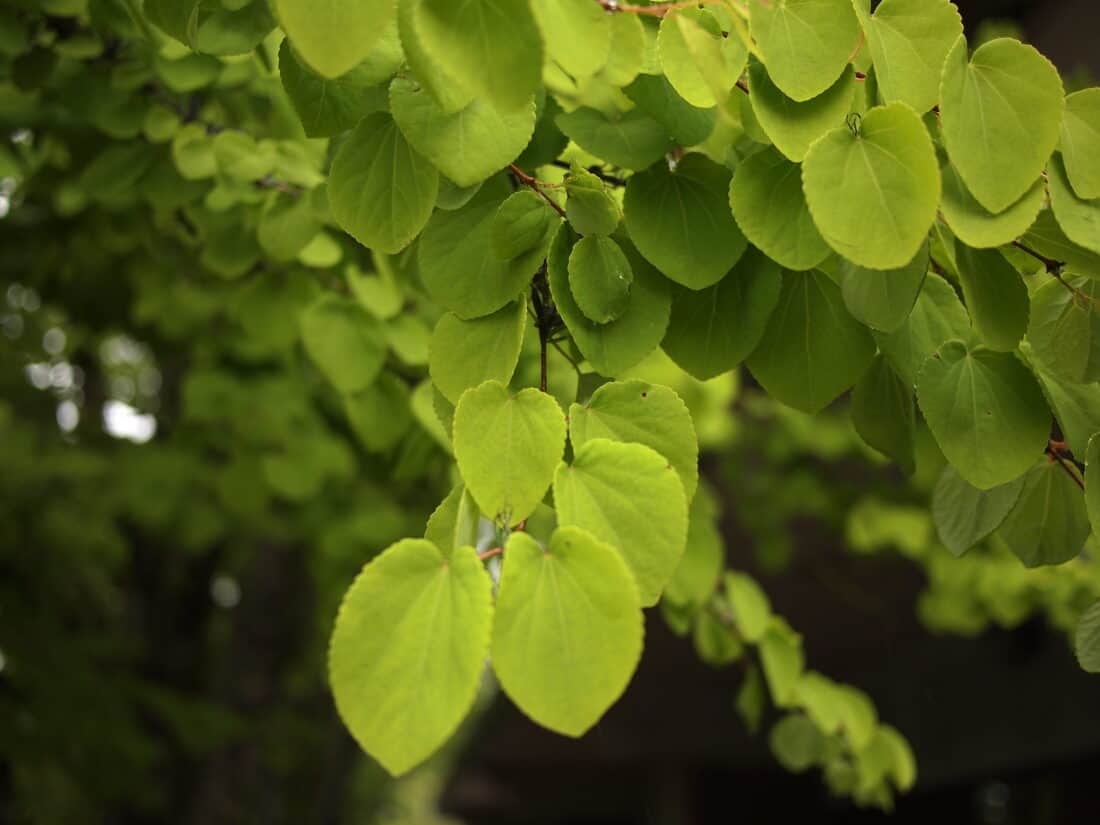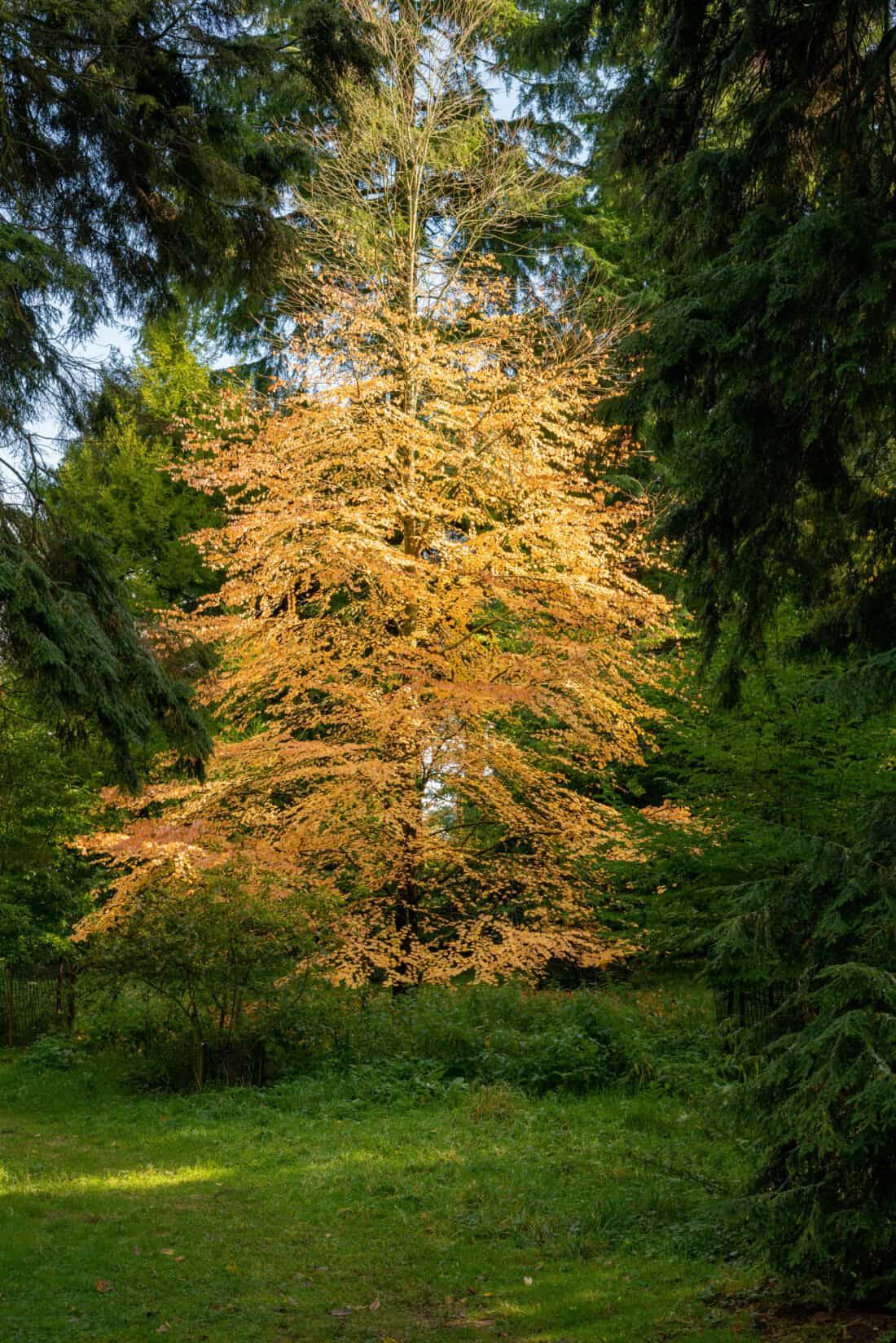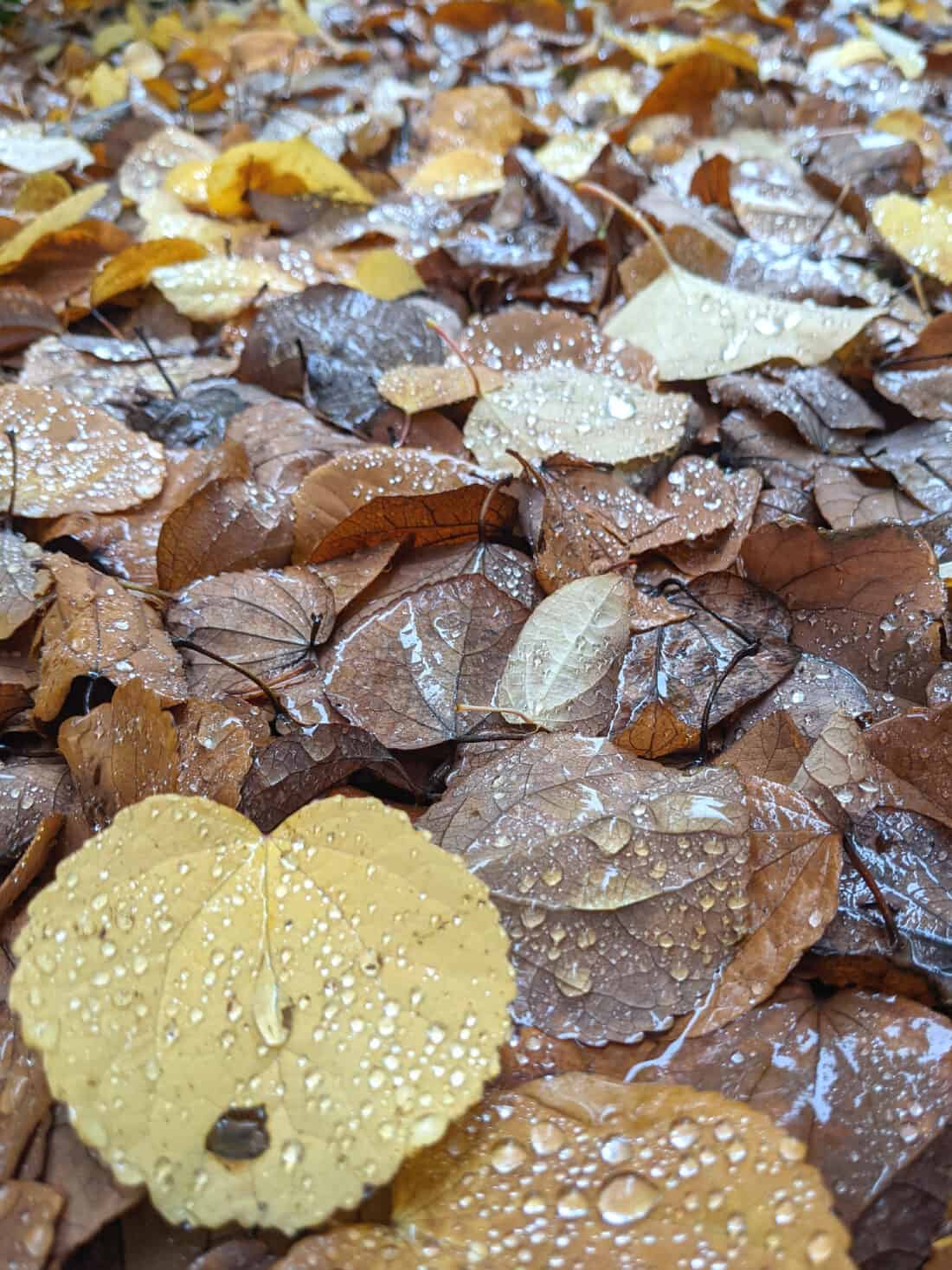If you have ever been up close and personal with a katsura tree (Cercidiphyllum japonicum), you’ve probably noticed that smell. Is it cotton candy (or do you call it candy floss tree?), or maybe it is the scent of brown sugar? Burnt sugar? Caramel? I’m going to call it the sweet scent of fall. As the leaves change color in autumn, standing underneath a katsura tree, you get the sweet smell of cotton candy or caramelized sugar. That is not the only reason to grow Cercidiphyllum, but it is one of the best.

Where to Grow your Cotton Candy Tree?
This tree is happiest in a bright location (full sun). It prefers almost all-day sun, and having a sunny place makes the tree dense in its growth habit and truly enriches its fall color.
I have always been told that the katsura tree needs moist soil that is in a well-drained location until established. Otherwise, it will drop its leaves in late August or early September, especially during a dry summer.
I have observed this happen in the south and along the mid-Atlantic, but I must add an asterisk to this assumption.
This has not been true here in coastal Maine. We have several trees planted around the gardens here at CMBG, and they are natural aristocrats all summer and into fall.
The fall color for our Candy floss trees started in early October and is just wrapping up this week.
I realize this has been a remarkable autumn for fall color in New England, but our trees are in relatively dry soil. Maybe it is the cooler summer temperatures that they prefer? Regardless, these are some of the finest shade trees you can grow.

Cercidiphyllum Japonicum in the Spring
The katsura leaves are a rounded heart shape and blue-green to spring green through the summer when leaves have matured, but in the early spring, the new leaves are reddish-purple. The bark is slightly exfoliating, the tree form is upright, and it has a somewhat pyramidal habit. In many respects, it is the perfect shade tree for the New England garden.
Katsura – Cercidiphyllum Japonicum in the Fall – A tree that smells like cotton candy
Katsura is not native to North America and does not have a showy flower. (The dioecious tree has male and female flowers on separate sexed trees – but neither are conspicuous).
But despite these drawbacks, this is still a beautiful tree with a great form and leaves that smell of cotton candy in the fall!
This deciduous tree has a beautiful color change, and a large katsura tree will be the focal point of any garden.
You can expect fall colors that range from yellows to apricot color leaves.
As for the cultural specifics, its hardiness zone extends from USDA zones 4 to 8 and, in ideal conditions, will ultimately reach a mature landscape size of 40-60 feet in height.

Shopping for Katsura trees:
There are numerous cultivars available in commerce.
This spring, we added ‘Tidal Wave’ (a weeping form) and ‘Rotfuchs’ (or ‘Red Fox’ has a reddish-purple color leaf form) to the garden.
I am hoping to add ‘Heronswood Globe’ shortly. It is a smaller, compact, rounded head form selected from the former Heronswood gardens of Dan Hinkley and Robert Jones in Washington State.
If you are looking for a small tree – check out the weeping katsura (Katsura ‘Pendulum’) – they top out at 15 -25′.
Broken Arrow Nursery has a beautiful selection of Katsura.
This winter, while shopping for plants, I will be looking for new and exciting selections of katsura trees. Are there some fantastic cultivars that you are growing that we should add?
-Rodney
Images: Kirill Ignatyev, Ruth Hartnup,
+comments+